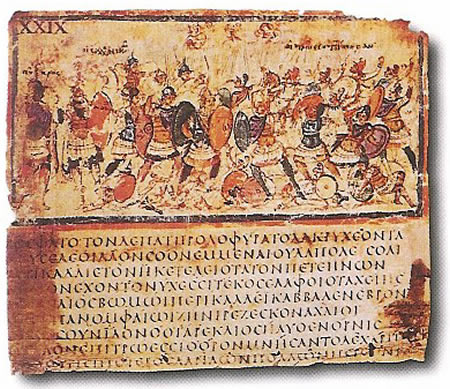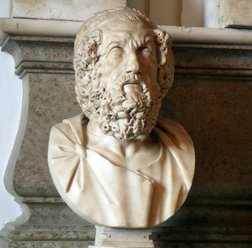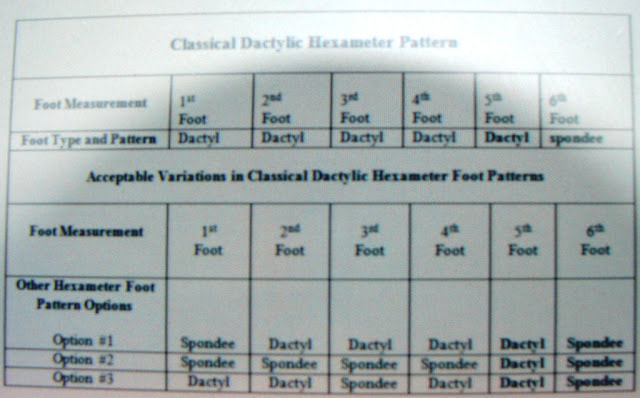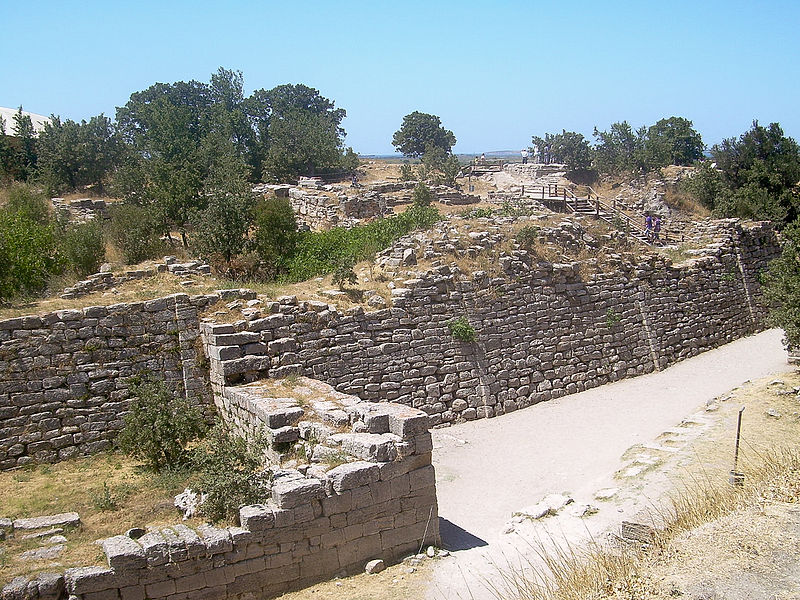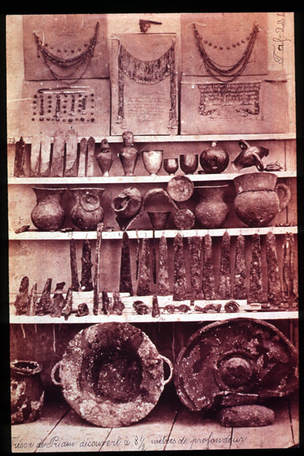Epic Poetry
Epic poetry is form of poetry that follows the form of a long narration. Originally, they were the result of oral history and oral performers, but have also been written in literate societies – such as Milton’s Paradise Lost. Some common traits include vast sets, divine interventions, epithets, catalogues, and a hero who undergoes a quest in which he exemplifies moral attitudes of his culture. Furthermore, they usually begin in medias res “in the middle of things” and use flashbacks to bring us up to speed and invocation, in which the writer invokes a Muse or other divinity to help the story be told. The stylistic form varies based on culture, but each culture tends to stick with one form; the Greeks have their dactylic hexameter whereas Germanic poetry is alliterative verse without rhymes.
Epic poetry is form of poetry that follows the form of a long narration. Originally, they were the result of oral history and oral performers, but have also been written in literate societies – such as Milton’s Paradise Lost. Some common traits include vast sets, divine interventions, epithets, catalogues, and a hero who undergoes a quest in which he exemplifies moral attitudes of his culture. Furthermore, they usually begin in medias res “in the middle of things” and use flashbacks to bring us up to speed and invocation, in which the writer invokes a Muse or other divinity to help the story be told. The stylistic form varies based on culture, but each culture tends to stick with one form; the Greeks have their dactylic hexameter whereas Germanic poetry is alliterative verse without rhymes.
|
The Iliad
The title of the poem refers to Ilium, which was another name for Troy. While the action takes place over a few weeks in the end of the war, there are a lot of references to events before and after and thus there is a pretty complete picture of the Trojan War. The poem most likely dates from the late 7th to 8th century BC but tells a tale of the Late Bronze Age collapse of the 12th century BC. The gap between the poem and supposed event is the Greek Dark Ages, from the end of the Mycenaean palaces to the Greek city states; the dark ages are called thus due a lack of written records and archaeological evidence and so there is debate about which elements are from pre-dark ages and which were added later – either by Homer or through other traditions. It has been pretty much confirmed that the poem and story was originally an oral tradition. Thematically, nostos (homecoming), kleos (glory and fame gained through battle), timê (respect and honor through accomplishment), and fate surround the motivation and reasons behind the characters deeds: including the poignant wrath of Achilles, which is referenced by the first word of the poem μῆνιν (meaning wrath). Achilles’ anger triggers a lot of main events in the poem, such as the failings of the Greeks, the death of his friend Patroclus, the death of Hector, and the final destruction of Troy. Homer
Many accounts name him as a blind bard from Ionia, but these are most likely legends and thus we know virtually nothing about him, not even if he was even one person. All that can be determined is he was the founder of the Homeridae, a guild of oral performers, although he could still have been mythical. Thus, the “Homeric Question” is a popular topic of scholarship which asks who is Homer, if they wrote both poems, and when, where, and why they were composed. The poems are near-universally agreed to have been the result of a century-old oral tradition that eventually were written down, likely between the 8th and 6th century BC. . Dialectically, Homeric poetry is written in Old Ionic Greek, a specific dialect, with some loan words from other nearby dialects. |
Segment of the Iliad in Codex F205 (Biblioteca Ambrosiana), late 5th or early 6th C. AD
Homer at the Capitoline Museums, Rome.
|
Dactylic hexameter
A form of poetic meter used in epic poetry, like the Homeric works, Aeneid, and Metamorphoses. It consists of six feet that are one dactyl – which is a long and two short syllables –, or it can be substituted by a spondee – two long syllables –, especially in the first four feet. However, the fifth foot is almost always a dactyl and the sixth foot is either a trochee – a long then short syllable – or spondee. Also, they have a “comma” function either after the first syllable in the third foor, second syllable in third foot if third foot is a dactyl, after the first syllable of the fourth foot, or after the first syllable of the second foot. The form is enjambed, meaning the meaning doesn’t end at the end of each line. In Homeric, they have two bridges where there is not a break in a word: either in the second or fourth foot if they are dactyls; furthermore, there are exceptions to the rules but later forms of this meter virtually was born in Homeric poetry.
A form of poetic meter used in epic poetry, like the Homeric works, Aeneid, and Metamorphoses. It consists of six feet that are one dactyl – which is a long and two short syllables –, or it can be substituted by a spondee – two long syllables –, especially in the first four feet. However, the fifth foot is almost always a dactyl and the sixth foot is either a trochee – a long then short syllable – or spondee. Also, they have a “comma” function either after the first syllable in the third foor, second syllable in third foot if third foot is a dactyl, after the first syllable of the fourth foot, or after the first syllable of the second foot. The form is enjambed, meaning the meaning doesn’t end at the end of each line. In Homeric, they have two bridges where there is not a break in a word: either in the second or fourth foot if they are dactyls; furthermore, there are exceptions to the rules but later forms of this meter virtually was born in Homeric poetry.
In English:
Cradle of / love, and the / mercies of / God, give / gifts to us / so true
dactyl, dactyl, dactyl, spondee, dactyl, spondee
In Homer’s Iliad:
"Sing, goddess, the anger of Peleus’ son Achilles"
μῆνιν ἄειδε, θεά, Πηληϊάδεω Ἀχιλῆος
In metered units:
μῆνιν ἄ | ειδε, θε | ά, Πη | ληϊά | δεω Ἀχι | λῆος
dactyl, dactyl, spondee, dactyl, dactyl, trochee.
Cradle of / love, and the / mercies of / God, give / gifts to us / so true
dactyl, dactyl, dactyl, spondee, dactyl, spondee
In Homer’s Iliad:
"Sing, goddess, the anger of Peleus’ son Achilles"
μῆνιν ἄειδε, θεά, Πηληϊάδεω Ἀχιλῆος
In metered units:
μῆνιν ἄ | ειδε, θε | ά, Πη | ληϊά | δεω Ἀχι | λῆος
dactyl, dactyl, spondee, dactyl, dactyl, trochee.
|
|
|
|
Walls of Troy VII
The supposed Priam's Treasure as found by Schliemann, controversial. They may have been placed there by him, and they're older than Homer's king.
|
Historicity of Troy
The Greeks thought the sack of Troy was a real event, but by the mid-19th century it was thought to be a myth, although excavations at Hissarlik, Turkey prove Troy was likely a real city, though scholars believe the big event is likely a conglomeration of various battles during the Bronze Age with a core truth of a Greek attack against Troy, although a lot of poetic license has been taken. Regardless, Homer’s Illiad and Odyssey from the 9th to 6th century BC are the most important literary representations of the popular story, along with the anonymous Epic Cycle poems. Historically, if mainly based on a major event, it probably occurred between 1334 BC and 1135 BC. In 1865, Frank Calvert began excavations in Hissarlik and his acquaintance, Heinrich Schliemann, began digging in 1868 and discovered a bunch of cities built in succession from the Bronze Age to Roman times that aligned with the geography set forth in the Iliad. Schliemann was, at best, an amateur archeologist who caused serious damage to the site and may have faked some finds. The site has maintained some interest and multiple scientists have come to examine it. Today, Troy VIIa, dated to the mid-to-late-13th century BC is the most likely candidate for Homeric Troy as it seems to have been destroyed during the slaughter and fire characteristic of war. Also, Troy VI, the layer before Homeric Troy, was destroyed by an earthquake but has a lot of Mycenaen pottery and thus the Greeks would have known about the city. Also, in 1995 a Luwian – ancient language of the Anatolian branch of the Indo-European language family – seal was found, thus bringing up a conversation about the language spoken there. There has been archeological evidence linking Troy to a kingdom known to the Hittites as Wilusa, which has multiple conflicts at the end of the Late Bronze Age, and thus there is more evidence it may have been based on a historical event. Obsession with the Trojan War carried on through Roman and Medieval times, especially in Virgil’s Aeneid, which links Trojan prince Aeneas to the founders of Rome, and the Frank’s determination that Priam was their first king. |
